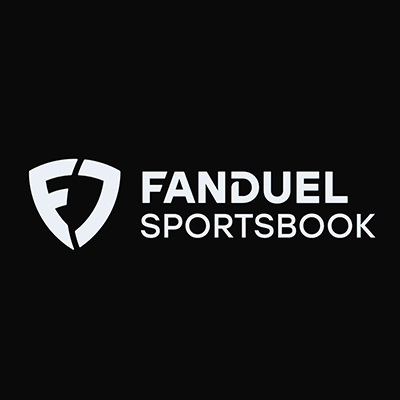How Betting on Fixed Odds Works?
Placing a bet with fixed odds doesn’t differ much from any other betting type. Fixed odds bookies post the odds ahead of the event, denoting probabilities of each outcome, and it’s up to you to evaluate those probabilities and pick which bets to make.
Since they’re published ahead of time, fixed odds are also called ante-post bets, especially in the horse racing world when they’re set before the betting market opens.
Bookies typically set the odds themselves. The value is based on multiple factors - mostly the likelihood of outcome and bookies’ profit margins. Other factors, like the number of players betting on certain outcomes, can influence the odds down the line.
Once you’ve placed a bet, the odds are locked for you, no matter what. That’s why they’re called fixed-odd bets. Then, it’s only a matter of waiting for the event and seeing whether you won your bet.
The Main Advantages of Fixed-Odds Betting
Why is betting at fixed odds so popular anyway? There are a few reasons:
Straightforwardness
One of the greatest advantages of fixed odds is how easy to understand they are. For most people, even those unfamiliar with betting, the values are clear representations of the probability of each outcome. You get a clear distinction between the favourite and the underdog, allowing you to start betting quicker.
More Predictable Winnings
When browsing fixed odds sports bets, you can immediately estimate your winnings. If the team you’re betting on has 1.75 odds of winning, you’ll know that your €10 stake turns into a €17.5 potential payout. This also helps with budgeting your betting expenses.
Higher Payouts for Long Shot Bets
Compared to other bet types like tote bets, your locked-in fixed-odd bets do not fluctuate depending on the total money in the pool or how other punters are betting. Instead, the bookie sets the odds well in advance of the event and the odds stay the same for you the moment you place your bet.
Different Ways of Expressing Fixed Odds
Even though betting on fixed odds works the same across all sports betting sites, the way odds are represented at these sites isn’t uniform. There are, in fact, three different ways to express fixed odds and it depends on the geographical location of the sportsbook, its target audience and, sometimes, even the sports you’re betting on.
Those are decimal, fractional, and moneyline (American) odds.

Decimal Odds
Decimal betting odds are the most common, especially if you’re betting in continental Europe, Australia, New Zealand, or Canada. They’re the easiest to read as they represent the multiplier of the wager. So, if you’re betting on odds of 1.4 with a €10 wager, it means your total payout is €14.
Fractional Odds
Irish and UK betting sites typically use fractional odds, especially for betting on horse races. Unlike odds shown with decimal values, fractional odds don’t necessarily represent the odds of winning but are a fraction of the stake amount the bettor can win.
What’s also different with fractional odds is that, in case of a win, the bettor always receives the original stake on top of their winnings. Odds of 4/1 (four to one) on a €10 wager can net a €50 payout (€40 plus the original stake) while betting the same amount at 1/4 odds results in a €12.5 win.
Moneyline Odds
Moneyline odds represent an outcome of an event with either a positive or a negative value. They’re mostly prominent at the American betting sites, hence why they’re often labelled as American odds. The format is +150 for the underdog and -150 for a favourite in the match.
Moneyline betting differs from the above two formats. If the value is positive, it represents winnings on a $100 bet. For negative values, the odds represent how much a bettor has to wager to win $100. In both cases, the original stake gets returned to the bettor if they win the bet.
Fixed Odds Betting Examples
Aside from different ways to express them at sportsbooks, fixed-odd bets can also pay out differently depending on how the bookie creates them.
These are the most common fixed odds betting examples:
- Even money bets: The most straightforward of fixed odds bets. An even money bet is a simple wager where the payout equals the original bet, ie. you win €100 on top of your €100 stake. Even money bets are sort of a rarity at sportsbooks, so it’s more common to see odds at -110, meaning the house has vigorish, or juice as it’s more commonly called.
- Odds on bets: In these bets, you win a fraction of the stake if your bet comes in. You’ll see these bets written as either 1.25 or 1/4. That means if you bet €100 at 1/4 odds, you win €25 and your original stake. These events are more likely to happen.
- Odds against bets: These bets work the opposite way from odds on beats, meaning that your stake is multiplied if the bet goes through. For example, if you bet €100 at 4/1 odds, you’ll win €400 plus your original stake. These bets are typically for the underdogs or unlikely events in a match.
Increase Your Chances of Being Successful With Betting on Fixed Odds
Good risk assessment is what separates the expert bettors from the greenhorns. Because, aside from the odds posted by fixed odds bookies, you also need to take into account your chances of winning.
Obviously, getting familiar with the event you’re betting on helps, as you’ll understand better whether the posted odds truly reflect the outcome chances. A lot of bettors tend to specialise in one or two sports, mostly football betting or horse racing, for that particular reason.
Another good strategy is to place your bets either as soon as the market opens or in the last 30 minutes before the event. This way, you’re either getting better odds, or your bet is more likely to win if you notice other players are betting good money on an outcome.








